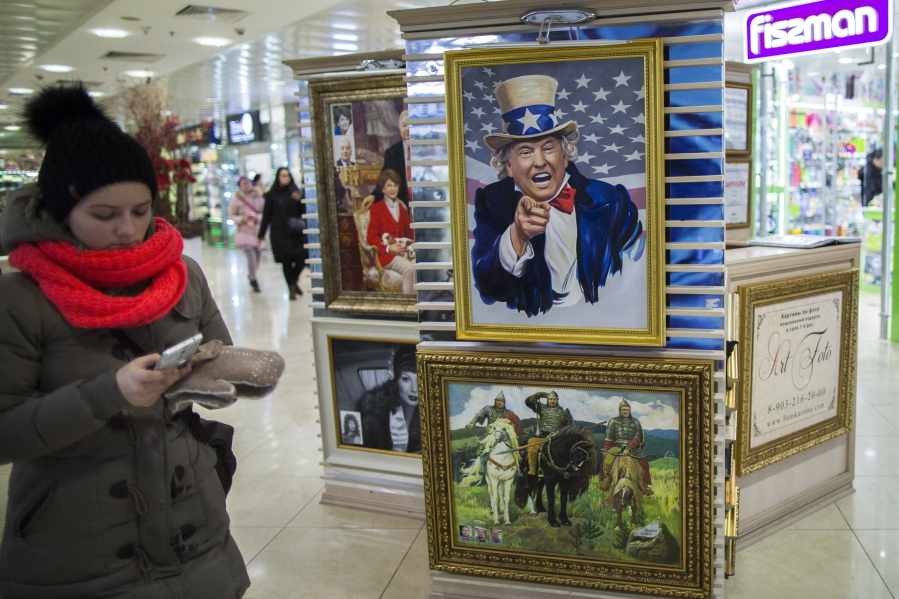MOSCOW — Leonid Brezhnev had a taste for fast, flashy Western cars. So perhaps it’s fitting that Lamborghini, Porsche and Rolls-Royce dealerships have opened near the Moscow apartment building where the Soviet leader once lived.
For a correspondent back in Moscow for the first extended time since 1993, these symbols of luxury are particularly jarring.
Back then, I witnessed the 1991 collapse of the Soviet Union amid the political and social reforms unleashed by Mikhail Gorbachev. Seven decades of fear and authoritarian control exerted by the Communist Party had vanished, and there was optimism that life would soon improve under Boris Yeltsin.
Instead, more economic hardship ensued, along with chaos, the rise of organized crime and the plundering of the country’s resources. Vladimir Putin followed Yeltsin, and brought a measure of stability despite the widespread corruption that persisted in his governments.
Now Putin is preparing to campaign for yet another six-year presidential term and continues his quest to restore Russia’s standing in a post-Cold War world. That will include a new, as yet uncertain, relationship with the United States and President Donald Trump, amid an assessment by U.S. intelligence agencies that Russian hackers interfered in the 2016 U.S. election.
How does Moscow compare to the city where I once lived? The answer, as with many things in Russia, is in shades of gray, like the skies over the capital in late winter.
• GHOSTS, WRAITH
Skyscrapers have sprouted amid Moscow’s grimy apartment blocks, and the sleek new buildings appear to be almost Photoshopped onto the landscape.
The empty stores and punishing long lines of the 1980s and early ’90s are gone, replaced by 24-hour coffee shops, supermarkets and pharmacies with helpful staff. Multistory shopping malls are filled with Western retailers — thanks to an economy once boosted by the surging price of oil. But due to a two-year recession in Russia, many of the consumer goods would put a big dent in an ordinary Muscovite’s income.
The outside of the Hotel Ukraine looks much as it did when it opened 60 years ago, one of the Stalinist skyscrapers that dot the capital. When I stayed there in 1990 it was a dark and dingy place, with battered furniture, threadbare carpets and stubborn key ladies, or “dezhurnye,” who monitored the halls.
One of my early assignments that year was at Food Store No. 44, located in one of the hotel’s long flanks. To stem panic buying, shoppers had to show their documents. I can still hear the clerks shouting at customers: “Passports, citizens, passports! Moscow or Moscow region only!”
Today, that large food store has been replaced by restaurants and Italian and German designer clothing shops.
Entering the hotel, I now see sweeping staircases, plush leather couches, gilded chandeliers and marble floors.
Oh, and there’s that Rolls-Royce dealership just off the lobby, where for just $450,000 — or 26 million rubles — you can buy a black 2016 Wraith, drive it onto Kutuzovsky Prospekt, turn right, and wheel past Brezhnev’s old place.
• ‘FEAR COMES BACK’
Vladimir Polyakov, a longtime aide to Gorbachev, initially balks at listing the many changes in Russia since the end of the Soviet Union. Finally, he laments the demise of his boss’ policy of “glasnost” — or more openness.
“For me, it is media,” the former journalist said in an interview.
Freedom of the press has steadily shrunk under Putin, with all nationwide TV stations under state control and most print media full of adulation for him. Only a few independent media outlets remain from the freewheeling ’90s.
When Putin succeeded Yeltsin in 2000, Russia “was a mess — there was chaos,” Polyakov said. Putin’s initial steps to maintain stability “were right,” he added, and high energy prices rained money on the country.
Yet hundreds of thousands protested in Moscow in 2011 and 2012, as Putin became president once again. In response, the government restricted demonstrations and prominent opposition activists were prosecuted.
Polyakov said the rollback of freedom of the press — and “freedom in general” — is the biggest change of the past 25 years.
“Fear comes back,” he said.



